| 29 October |
• yesterday • tomorrow |
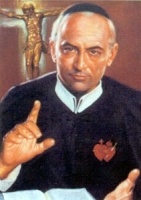
Second of nine children born to Pasquale, a pasta factory manager, and Marie Marseglia Errico, who worked weaving plush. A good child, pious, always ready to help his father at work, or his mother with his younger siblings. He felt a call to the priesthood at age fourteen. He was turned away by the Capuchins and Redemptorists due to his youth. Studied at a diocesan seminary in Naples, Italy from age sixteen, walking the five miles to class each day, and was ordained on 23 September 1815 in Naples.
School teacher for twenty years. Parish priest at the church of Saint Cosmas and Damian. Known for his devotion to the Sacrament of Reconciliation and ministry to the sick, his self-imposed austerties and penances. He made yearly retreats to the Redemptorist house in Pagani, Italy.
During his retreat in 1818, Saint Alphonsus Maria de Liguori appeared to him in a vision, and told him that God wanted Gaetano to build a new church, and to found a new religious congregation. While Gaetano initially received strong support from the local people, it faded in the face of fund-raising and work, and it wasn't until 9 December 1830 that he dedicated and blessed the church Our Lady of Sorrows at Secondigliano; it has since become one of Italy's most popular pilgrimage sites.
Nearby he built a small house for himself and a lay-brother who took care of the church; this was the beginning of the Missionaries of the Sacred Hearts of Jesus and Mary. The Missionaries received local approval on 14 March 1836, approval by the Congregation of Bishops on 30 June 1838, royal approval on 13 May 1840, and papal approval by Blessed Pope Pius IX on 7 August 1846. Gaetano served as first Superior General.
His beatification miracle occurred in southern Italy in January 1952 and involved a man with a perforated stomach wall. Just before emergency surgery, his wife slipped a relic of Father Gaetano under his pillow, and together they prayed for his intercession. His health began to improve immediately, and he was soon healed without medical intervention.
19 October 1791 in Secondigliano, Naples, Italy
10am 29 October 1860 in Secondigliano, Naples, Italy of natural causes
Sunday 12 October 2008 by Pope Benedict XVI
Let us kindle the love of the Sacred Hearts of Jesus and Mary in the hearts of all people. - Saint Gaetano
"You were ransomed, not with perishable things such as silver or gold, but with the precious blood of Christ" (1 Peter 1:18-19). These words, taken from the second reading, make us think of Blessed Gaetano Errico, priest and founder of the Congregation of the Missionaries of the Sacred Hearts of Jesus and Mary. In an age defined by profound political and social change, in opposition to the spiritual rigorism of the Jansenists, Gaetano Errico proclaimed the greatness of the mercy of God, who always calls to conversion those who live under the dominion of evil and sin. True martyr of the confessional, the new Blessed spent entire days giving his best energies to welcoming and listening to penitents. By his example, he urges us to rediscover the value and importance of the Sacrament of Penance, where God distributes his pardon so generously and shows the gentleness of the Father towards his weaker children. – from the beatification homily by Pope John Paul II
https://catholicsaints.info/saint-gaetano-errico/
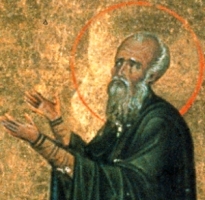
• Abraham the Great of Kidunja
• Abraham of Edessa
• Abraham of Kidunja
• Abrhahn of Kidunaja
Born to a wealthy family near Edessa, Syria. Forced into an arranged marriage at an early age. During the wedding festivities, Abraham fled. He walled himself up in a nearby building, leaving a small hole through which his family could send in food and water, and by which he could explain his desire for a religious life. His family relented, the marriage was called off, and he spent the next ten years in his cell.
After a decade of this life, the bishop of Edessa ordered Abraham from his cell. Against Abraham's wishes, the bishop ordained him, and sent him as a missionary priest to the intransigently pagan village of Beth-Kiduna. He built a church, smashed idols, suffered abuse and violence, set a good example, and succeeded in converting the entire village. After a year, he prayed that God would send the village a better pastor than he, and he returned to his cell. It is from his success in Kiduna that he became known as Kidunaia.
He left the cell only twice more. Once a niece, Saint Mary of Edessa, was living a wild and misspent life. Abraham disguised himself as a soldier, which he knew would get her attention, and went to her home. Over supper he convinced her of the error of her ways; she converted and changed her life, and Abraham returned to his cell. His final trip out was his funeral, attended by a large, loving throng of mourners. His biography was written by his friend Saint Ephrem of Syria.
c.296 at Edessa, Osrhoene, Mesopotamia (in modern Syria)
c.366 at Edessa, Osrhoene, Mesopotamia (in modern Syria) of natural causes
• hermit wearing animal skins
https://catholicsaints.info/saint-abraham-kidunaia/

• Achachildis, Achatia, Atzin
• Reinilda of Luxemburg
Born to the nobility, the sister of Saint Cunegundes. Married to Thietmar and mother of quintuplets; she and her husband, both of whom were drawn to religious life, then took vows of celibacy. Noted for her charity to the poor, and as a miracle worker. Founded a parish church in Wendelstein, Germany. Once when she discovered that a servant had killed and stolen some geese, she forgave the servant and brought the geese back to life - including the one that had been cooked.
• c.970 of natural causes
• interred at the church in Wendelstein, Germany that she had founded
• tomb re-discovered in 1447
• healing miracles, especially of children, were reported at the tomb
• church later taken over by Protestants and devotion ceased
• presenting five infants to her husband
• with five children
• performing various charitable acts and miracles
• three geese
• goose leg
• tree full of ripe cherries (when she was pregnant with quintuplets in the dead of winter, she had a craving for cherries; a tree in her garden suddenly produced a full crop of them)
https://catholicsaints.info/saint-achahildis-of-wendelstein/
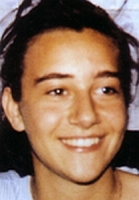
Luce Badano
Young lay woman in the Diocese of Aqui Terme, Italy. Daughter of Ruggero Badano, a truck driver, and Maria Teresa Caviglia. A kind, happy and pious girl, she enjoyed tennis, swimming, hiking, singing, dancing and initially wanted to be a flight attendant. Member of the Focolare Movement at age nine. At age 16 she began to feel drawn to religious life; soon afterward she was diagnosed with cancer in her shoulder. Chiara insisted that she could become a missionary, but the cancer spread quickly, affecting her spine, and she lost the use of her legs. She finally accepted that she wasn't going anywhere and spent her remaining time praying and being supportive of her family and friends.
29 October 1971 in Savona, Italy
7 October 1990 in Sassello, Savona, Italy of natural causes
25 September 2010 by Pope Benedict XVI
"Don't cry for me. I am going to Jesus. At my funeral I don't want people to cry, but rather to sing with all their voices." - Blessed Chiara during a medical crisis near the end of her life
https://catholicsaints.info/blessed-chiara-badano/
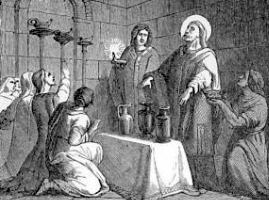
Bishop of Jerusalem, consecrated c.180 when he was already an old man. Late in life, he was accused of a crime. None of the Christians in his diocese believed it, but Narcissus did not believe he should serve after being under such a cloud, and he became a desert hermit. After a complete acquittal, Narcissus returned to his see, older, weathered, but stronger and more zealous than ever, and served several more years. One Holy Saturday he turned water into lamp oil so the Easter vigil services could be conducted. When his age began to wear on him, Narcissus begged God to send a bishop to help him. Saint Alexander of Cappadocia responded, and the two ruled the diocese together, Narcissus living to age 116.
99
215 of natural causes
against insect bites
• bishop holding a blossoming thistle
• bishop with a pitcher of water
• an angel carrying his soul to Heaven
https://catholicsaints.info/saint-narcissus-of-jerusalem/

Averkii, Avraamii
Raised as a pagan, as a young man Abraham was struck down by a nearly fatal illness, then cured by prayer. Convert. Monk, taking the name Abraham. Became a travelling evangelist and preacher in Rostov, Russia. Legend says that a vision of Saint John the Divine gave Abraham his own staff, and that Abraham used it to smash the pagan stone idol of Veles in Rostov; he then built the monastery of the Theophany on the site of the old pagan temple, and the staff was later carried into battle by Ivan the Terrible who hoped to benefit from its holy power. Abraham built two parish churches, one dedicated to Saint John, and started charitable organizations. Chosen abbot, he led by doing the most menial tasks, and serving all others.
10th century in Galich, Russia as Averkii
• at the monastery of Rostov, Russia of natural causes
• buried at the church of the Theophany monastery
https://catholicsaints.info/saint-abraham-of-rostov/

Dodo, Dodón
Eighth-century Benedictine monk at Lobbes Abbey. Spiritual student of Saint Ursmar of Lobbes in Belgium. Abbot of the monastery of Wallers-en-Fagne, Cambrai, Neustria (in modern France). Late in life he retired to live as a hermit in the area of the moden town of Moustiers-en-Fagne, France.
Vaux, Lomme (near Laon, France)
• c.750 in Moustiers-en-Fagne, France of natural causes
• re-interred in the church of the Priory of Wallers-en-Fagne in 888 by order of the bishop Of Cambrai, France
• relics enshrined at the altar of the church c.930
• relics later re-enshrined in a small church in the town of Moustiers-en-Fagne
https://catholicsaints.info/saint-dodone-of-wallers-en-fagne/
Niece of Saint Abraham Kidunaia. She lived for 20 years as an anchoress near Abraham's cell. In a moment of weakness, she was seduced by a renegade monk who had turned from his vows. Mary despaired of forgiveness for her lapse, and in her shame, moved far away and gave herself over to a wild, dissolute, and sexually active life. Saint Abraham only left his hermit's cell twice - the second being to visit Mary in the guise of a soldier. Like so many others, Mary picked him up and took him home. There, over supper, Abraham convinced her of the error of her ways. She converted and returned to the life of an anchoress, spending the rest of her days in prayer.
against sexual temptation
https://catholicsaints.info/saint-mary-of-edessa/
Son of a chieftain named Duagh. Hermit in Arranmore where he built two churches. His reputation for holiness attracted too much attention, so he retreated to the woods of Burren in 592 to live in isolation. In 610, on land donated by King Guaire of Connacht, he founded a monastery which became the center of the diocese of Kilmacduagh. He reluctantly served as the house's first abbot, the diocese's first bishop.
c.560 at Kiltartan, Ireland
29 October 632 of natural causes
1903 by Pope Leo XIII (cultus confirmed)
diocese of Kilmacduagh, Ireland
https://catholicsaints.info/saint-colman-of-kilmacduagh/
• Anne of Constantinople
• Euphemianus of
Born to a prominent family, Anne was drawn to religious life but her parents pushed her into an arranged marriage. Widow. She then disguised herself as a man, used the name Euphemianus, and became a monk at an abbey on Mount Olympus. Her piety was such that the brothers asked her to become their 'abbot', but she declined.
Constantinople (modern Istanbul, Turkey)
820 of natural causes
https://catholicsaints.info/saint-anne-of-mount-olympus/
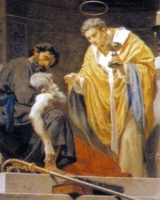
Spiritual student of Saint Eusebius who he accompanied into exile at Scythopolis in 335, and on his travels through Cappadocia, Egypt, and Illyricum. Bishop in 396. Gave the sacrament of the Annointing of the Sick to Saint Ambrose on his deathbed.
c.330 at Vercelli, Italy
415 of natural causes
https://catholicsaints.info/saint-honoratus-of-vercelli/
Ermelindis
She declined a marriage, donated her inhertiance to the poor, and lived as a hermitess near Bevekom, Belgium. Anchoress in Meldaert, Belgium.
c.510 in Lovenjoel, Belgium
c.590 in Meldaert, Belgium of natural causes
• against eye pain
• against fever
• against lameness
• Meldaert, Belgium
https://catholicsaints.info/saint-ermelinda-of-meldaert/
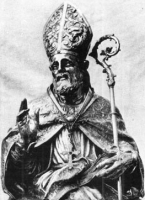
Stefano Minicillo
Abbot of San Salvatore Maggiore territorial abbey. Bishop of Cajazzo, Italy in 979.
935 in Macerata, Italy
1023
Cajazzo, Italy
https://catholicsaints.info/saint-stephen-of-cajazzo/
Theudar, Teuderio, Teodario
Priest. Monk. Spiritual student of Saint Caesarius of Arles. Abbot of a monastery in Vienne, France. Founded several monasteries in the region. In late life he lived as a hermit in the church of Saint Laurence in Vienne.
c.575
https://catholicsaints.info/saint-theodore-of-vienne/
Third-century niece of Saint Domnio. Nun in Bergamo, Italy. Martyred in the persecutions of Maximian Herculeus.
• beheaded in the late 3rd century
• relics re-discovered and enshrined in 1401
https://catholicsaints.info/saint-eusebia-of-bergamo/
Zenobio
Priest. Martyred in the persecutions of Diocletian for encourging condemned Christians not to abandoned their faith.
Sidon, Phoenicia
https://catholicsaints.info/saint-zenobius-of-sidon/
Sighelm
Monk. Abbot of Stavelot-Malmédy Abbey in Belgium.
c.670 of natural causes
https://catholicsaints.info/saint-sigolinus-of-stavelot/
Bishop of Metz, France. A noted scholar, he fought for orthodox doctines.
520 of natural causes
https://catholicsaints.info/saint-terence-of-metz/
Feliciano
Martyr.
Carthage, North Africa
https://catholicsaints.info/saint-felician-of-carthage/
In 600 Saint Gregory the Great had the relics of Donatus enshrined on Corfu.
https://catholicsaints.info/saint-donatus-of-corfu/
Educated with Saint Ursula and Saint Regulus of Patras. Nun. Recluse at Kirk-Kinner, Galloway, Scotland.
https://catholicsaints.info/saint-kennera/
Bishop venerated at Autun, France.
https://catholicsaints.info/saint-john-of-autun/
160 priests, laymen and religious who studied at the English College in Douai, France, then returned to minister to covert Catholics in England during a period of government persecution of the Church, and were murdered for their work.
https://catholicsaints.info/martyrs-of-douai/
A group of Christians executed together for their faith. Only their names have survived - Felician, Hyacinth, Lucius and Quintus.
Lucania, southern Italy
https://catholicsaints.info/martyrs-of-lucania/
Thousands of people were murdered in the anti-Catholic persecutions of the Spanish Civil War from 1934 to 1939. I have pages on each of them, but in most cases I have only found very minimal information. They are available on the CatholicSaints.Info site through these links:
• Blessed Arsenio Merino Miguel
• Blessed Benito Paradela Novoa
• Blessed Joaquina Rey Aguirre
• Blessed José Ruiz Bruixola
• Blessed Maurilio Tobar González
• Blessed Ponciano Nieto Asensio
• Blessed Victoria Arregui Guinea
• Bernardo de Olivella
CatholicSaints.Info Portable Edition